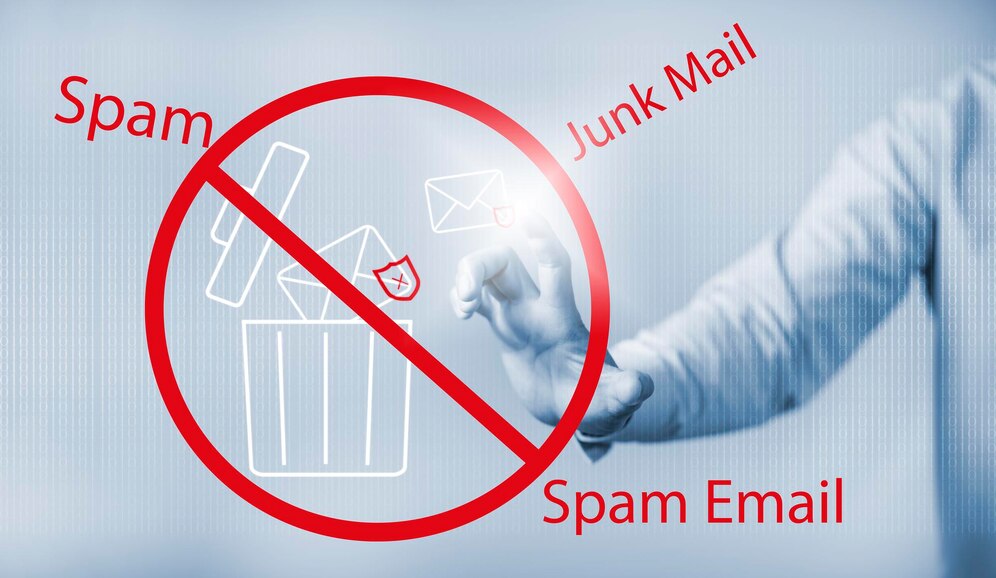Top 10 AI Tools Every Social Media Manager Should Know About in 2025
Barsha Bhattacharya, 22 hours ago

Barsha Bhattacharya, 22 hours ago

Barsha Bhattacharya, 1 day ago

Barsha Bhattacharya, 1 week ago


Over the past 20 years, the Internet has become an integral part of our lives. We are used to applying electronic payment services, paying bills through Internet banking, conducting business, and text messaging.
Anyway, if we do not follow the basic rules of electronic safety, our data can become the prey of fraudsters.
Students are among the people who are addicted to gadgets the most. Moreover, they often become victims of cyber attacks and other online threats.
Whether you search for college homework help online or download a new version of your favorite game, you must be careful. There are various sources of potential threats to the safety of your computer.
Phishing is a kind of online fraud aimed at obtaining user identification data. These may be logins and passwords for bank cards, accounts, and social media pages.
Given the gullibility or inattention of some people, the performance of this scheme becomes available not only to experienced hackers. It forces users to disclose personal information about themselves for further usage for malicious purposes.
Related Resource: The 5 Best Email Marketing Strategies to Try in 2020

You may be wondering: who would ever want to obtain my data? Am I interesting to anybody? Of course, no one tries to find out when you were born.
Personal information is not only about things you openly post on your social media pages. It is about much more valuable data than money or other material things.
● Card and account data, bank account logins, and passwords that allow transferring money to other accounts.
● Access to a database of contacts, allowing them to send messages to your friends and steal their data, too.
● Access to online store accounts to which you may be logged in via mail and social networks. Card data is often already saved there to accelerate the process of payment.
● Access to personal user data that can be used for blackmailing.
Related Resource: 6 Ways to Build Email List from Scratch

To combat online hackers, one must understand what is hidden behind their actions. What schemes do they use to get you on the hook?
Experts primarily recommend service users learn how to recognize phishing on their own. There are four elements you must pay attention to before clicking on a link. These are the following:
Is the sender known to you? If not, consider the email with increased suspicion and do not open any attachments. Phishing emails are often crafted to look like your friend or employer sent them. Still, such letters always slightly differ in the sender’s address. Try to notice and compare it with the reliable one.
Pay special attention to the title of the message! Many users have already learned the subject “Take your prize right now,” which is a usual sign of a phishing attack.
Nowadays, the most effective phishing subjects are the ones that do not arouse much suspicion. They can ask you to confirm the password and login of your profile or bank account details. Thus, check every source before providing your details.
The content of the email may also contain a whole range of phishing signs, including misspelled words or context inconsistencies.
For example, you are asked to confirm the correct login to online banking, in which you do not even have an account. Or you receive an email from a familiar contact but with a short link only. Make sure you never open it!
If you happen to click on it, conduct the following analysis before doing any operations on the website. If you are asked to enter personal information or card details, purchase through the site, have a look at HTTPS.
In front of its address must be a closed padlock icon. It means that the connection is secure. When you enter data on the site, it is automatically encrypted and thus cannot be intercepted.
The golden rule says – do not open attachments if something in the letter seems suspicious to you. Attachments may contain malware infecting the overall system of your computer.
Phishing emails that are socially engineered often get past the email filters for detection because of their sophistication. However, mostly, they have some characteristics in common that often trigger emotions like greed, curiosity, fear, and sympathy. Here are a few tips to spot a phishing email.
Emails that threaten you with a negative consequence, a loss of opportunity unless you take urgent action and ask for your credentials, are mostly phishing emails. They often approach users in a rush before they even get a chance to read the email properly.
Another good way to spot a phishing email is with spelling mistakes and bad grammar. Most companies use spell-checking tools for outgoing emails to make sure there are no errors. Those who use browser-based clients also apply autocorrect or highlight the features on a web browser.
When you send an email to a colleague or a friend, you use an informal tone. If an email starts with “Dear” and does not use a formal tone, and the style of communication is also unfamiliar, then it could be from a suspicious source.
Also, look for inconsistencies in the email address, domain name, and links. Is the email from an organization that you often correspond with? If so, verify the address with the previous one.
Hover the mouse over the link, check if the link is legitimate, and see what pops up. If the email says it is of a specific organization, but the domain name says something else, then it is a phishing email.
Most of the work-related file is now shared with collaboration tools like Dropbox, SharePoint or OneDrive. So, emails with internal attachments are somehow suspicious, more so when the extension is unfamiliar or is commonly connected with malware.
Of course, most experienced users are aware of the steps necessary to protect their gadgets. But how many people follow such instructions? Perhaps few. Make sure you are among those who stick to the rules. Below you will find a checklist.
In addition to a password, two-factor authentication usually requires additional actions. For example, entering the code, confirming signing-in on another device, or confirming entry through biometric data – fingerprint or face scan.

Attackers often rely on software vulnerabilities. To avoid problems, install updates that fix these shortcomings.
Apart from protection against phishing attacks, it has many valuable features of personal data protection. For example, antivirus prevents fraudsters from intercepting messages with codes and closes access to programs that steal data from online banks.
Phishing fraudsters often conduct mass mailings, so a good mail filter will always mark them as spam. Moreover, hackers often hide malicious code in the active content of a PDF file.
Thus, you can configure your email client or antivirus so that the service scans such suspicious attachments.
Phishing threatens not only organizations and managers of large firms but also individuals. Nowadays, everyone is exposed to online threats. Knowing your enemy and learning how to avoid phishing is crucial to maintaining online safety.
When you report email phishing and open suspicious emails, the security people can take care of it immediately before it does any damage. This way, you reduce the risk of the threat that will spread to other network areas and minimize disruption.
Read Also:
A self-proclaimed Swiftian, Instagram-holic, and blogger, Subhasree eats, breathes, and sleeps pop culture. When she is not imagining dates with Iron Man on Stark Tower (yes, she has the biggest crush on RDJ, which she won’t admit), she can be seen tweeting about the latest trends. Always the first one to break viral news, Subhasree is addicted to social media, and leaves out no opportunity of blogging about the same. She is our go-to source for the latest algorithm updates and our resident editor.

Barsha Bhattacharya, 22 hours ago

Barsha Bhattacharya, 1 day ago